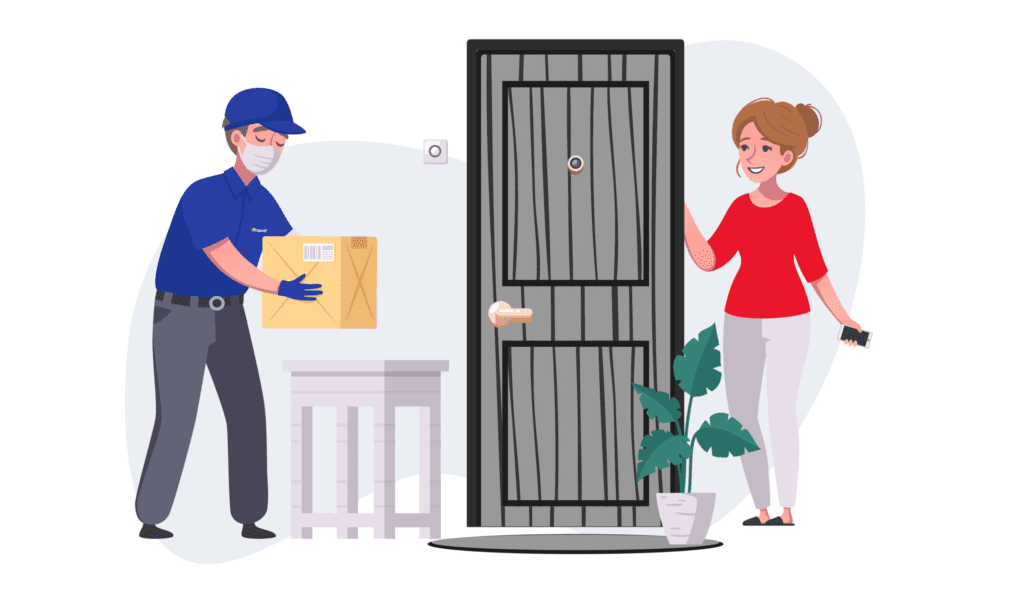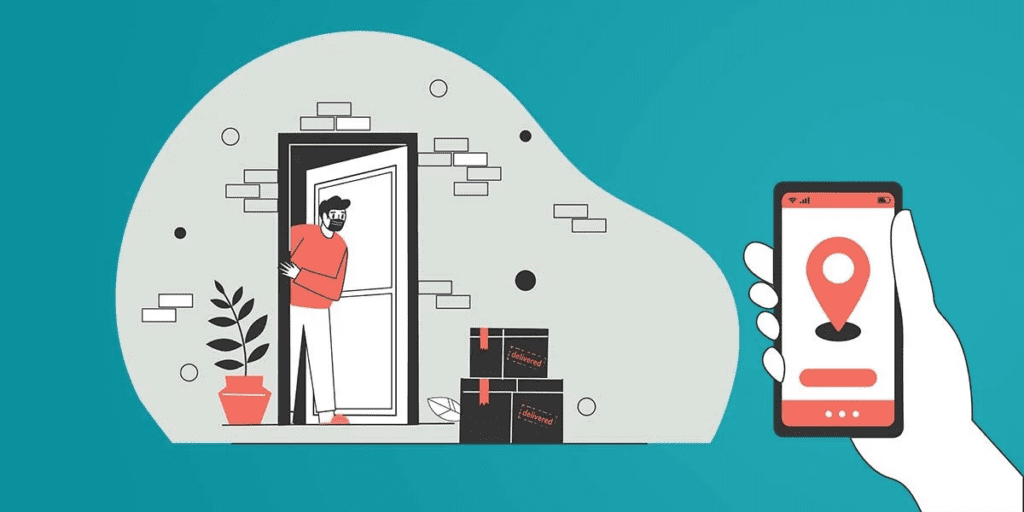
Contactless delivery has transformed the way we send and receive goods and services, redefining the convenience, safety, and efficiency of modern commerce. In an era marked by health-conscious consumer behaviors and technological advancements, understanding the ins and outs of contactless delivery is crucial for businesses and consumers alike. This comprehensive guide, ‘Contactless Delivery: All You Need To Know,’ is your gateway to unraveling the intricacies of this innovative approach to receiving products and services.
What is contactless delivery?

is a method of delivering goods or services to customers without physical contact between the delivery person and the recipient. It has gained significant popularity, especially in recent years, due to its convenience and the need for social distancing and hygiene practices during events like the COVID-19 pandemic. Contactless delivery methods vary depending on the type of goods or services being delivered and the technology used, but they share the common goal of minimizing direct human interaction.
How does contactless delivery work?
Contactless delivery works by minimizing physical contact between the delivery person and the recipient, typically through the use of technology and specific delivery protocols. Here’s a step-by-step breakdown of how typically operates:
Order Placement and Payment:
- Customers place their orders online, through mobile apps, or by phone, as is common for many types of deliveries.
- Payment is often made electronically during the ordering process, reducing the need for cash transactions or physical card payments. Payment methods may include credit/debit cards, digital wallets, or other online payment options.
Preparation and Notification:
- The delivery person or service provider prepares the order, which may involve packaging and labeling it appropriately.
- Customers are inform of the delivery status, which includes details such as an estimated time of arrival and a tracking link. Notifications are typically sent via SMS, email, or through a dedicate delivery app.
Delivery Process:
- Upon arriving at the customer’s specified delivery address, the delivery person may send another notification to confirm their arrival.
- Instead of engaging in direct contact with the customer, the delivery person employs a no-contact approach:
- Contactless Drop-off: The delivery person leaves the package at the customer’s doorstep, entryway, or in a designated delivery area outside the recipient’s residence.
- Photo Proof: In some cases, the delivery person may take a photo of the delivered package as proof of delivery. This photo is often include in the notification to the customer.
- Signatures: Where applicable, digital signatures or other forms of confirmation may be collect online to verify delivery, avoiding the need for in-person signatures.
Customer Confirmation and Collection:
- The customer is notified once again when the delivery has been successfully made and is provided with confirmation that the order is available for collection.
- The recipient can then safely collect their order without direct physical contact with the delivery person, ensuring both parties maintain a safe distance.
It provides a convenient and secure method for receiving products and services, with a primary focus on minimizing physical interactions, especially during situations where social distancing and hygiene practices are essential, such as the COVID-19 pandemic. It enhances the safety and convenience of the delivery process for both customers and delivery personnel
Why You Should Offer Contactless Delivery

Offering contactless delivery can provide several advantages for businesses. Here are five reasons why you should consider implementing contactless delivery:
Enhanced Safety:
- It helps to safeguard the health and well-being of both customers and delivery personnel, particularly during times of health crises, such as the COVID-19 pandemic. By reducing physical interactions, it minimizes the risk of disease transmission, instilling confidence in your brand’s commitment to safety.
Convenience and Flexibility:
- It offers greater convenience to customers. They can receive their orders without the need to be present when the delivery arrives, making it easier to fit deliveries into their schedules. This flexibility can enhance customer satisfaction and loyalty.
Competitive Advantage:
- Providing contactless delivery can give your business a competitive edge. Customers increasingly prefer businesses that offer this service, as it aligns with their desire for safer and more convenient shopping experiences. Being an early adopter or leader in contactless delivery can attract and retain customers.
Cost Efficiency:
- Contactless delivery can lead to cost savings. It reduces the need for physical paperwork, minimizes the time spent on in-person interactions, and can lead to more efficient delivery routes, resulting in lower operational costs.
Wider Market Reach:
- Contactless delivery allows you to expand your market reach. You can serve customers who prefer online shopping, whether due to convenience, safety concerns, or other reasons. This can lead to an increase in customer base and revenue.
By offering contactless delivery, you not only address the changing preferences and safety concerns of your customers but also position your business for long-term success in an evolving retail and service landscape. It demonstrates a commitment to providing a safe and convenient customer experience, which can result in higher customer satisfaction and loyalty.
How to Offer Contactless Delivery

To offer contactless delivery, you need to implement specific practices and technologies that minimize physical interactions between the delivery personnel and customers. Here are three key steps to offer contactless delivery:
Online Ordering and Payment:
- Digital Ordering: Implement an online ordering system or a mobile app through which customers can place their orders. Make sure this system is user-friendly and easy to navigate.
- Online Payment: Encourage and support online payment methods, such as credit/debit cards, digital wallets, or contactless payment options, to eliminate the need for cash transactions or physical card handling. Ensure the payment process is secure and seamless.
Contactless Delivery Protocols:
- Notification and Tracking: Implement a notification system that keeps customers informed about their delivery status. This includes sending estimated arrival times and tracking links.
- Delivery Drop-off: Instruct delivery personnel to practice a no-contact drop-off approach. They should leave packages at the customer’s doorstep, entryway, or another designated delivery area outside the customer’s residence. Customers should be informed of this drop-off method in advance.
- Photo Confirmation: Consider implementing a photo proof system where delivery personnel take a photo of the delivered package at the drop-off location. This photo can be sent to the customer as proof of delivery.
Customer Communication:
- Clear Communication: Ensure that your communication with customers is clear and informative. Explain your contactless delivery procedures on your website, app, or through other customer communication channels.
- Customer Support: Provide customer support to address any questions or concerns related to contactless delivery. Ensure your customer service team is well-informed about these procedures.
By following these steps, you can effectively offer contactless delivery, providing a safe and convenient experience for your customers while reducing physical interactions. It’s important to continuously monitor and improve your contactless delivery processes based on customer feedback and changing circumstances.